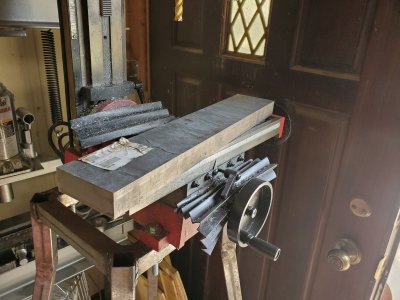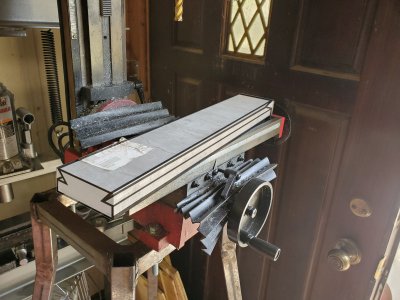Tolerances are a bit unknown. I'm trying to make the taper attachment dovetail for a lathe, and it's a part I do not have access to (it was missing from the stock).
My fear is that the piece I'm working on does not yet have a registration surface (anything "flat"), and that would mean that any shifting away from the original tie down points could result in misaligned milling planes (not flat). I suppose I could repeat the process, just taking skim cuts on opposing surfaces and then flipping it over until I can drop a straight edge on and not slide an 0.0005" feeler gauge underneath (kind of like using a home-grown index plate to make the real index plate, increasing your accuracy each iteration). Once I have a flat surface on the long side and on the adjacent long edge, the pins/part-translation/re-setup technique should work up until I get to cutting the dovetail, but if I have it squared then I can use some table stops to keep it aligned for the dove tail.
Over night (sometimes sleep is good) I thought about adding another single axis table to "compound" the distance, but it would have to be low profile because of the cutting area. I do worry about rigidity, but if I use some clamps and move things around, I might be able to get that first side flat, and a long edge.
The stock is 18.5" long, 3.125" wide, and 1.25" think. It is larger than I asked for from the metal supply shop, so I have to get it to dimensions.
The mill is a "mini mill" from Harbor Freight. It has been a great little mill for what I had room for up until this point. The table travel is 9"x8"x4", so I know I'm good in two dimensions, it's that 18.5 vs 9 that stopped me dead in my tracks for a bit. So the question is :
a) Pins and skim cuts?
b) add another single axis table?
c) Something else I'm not thinking about?





